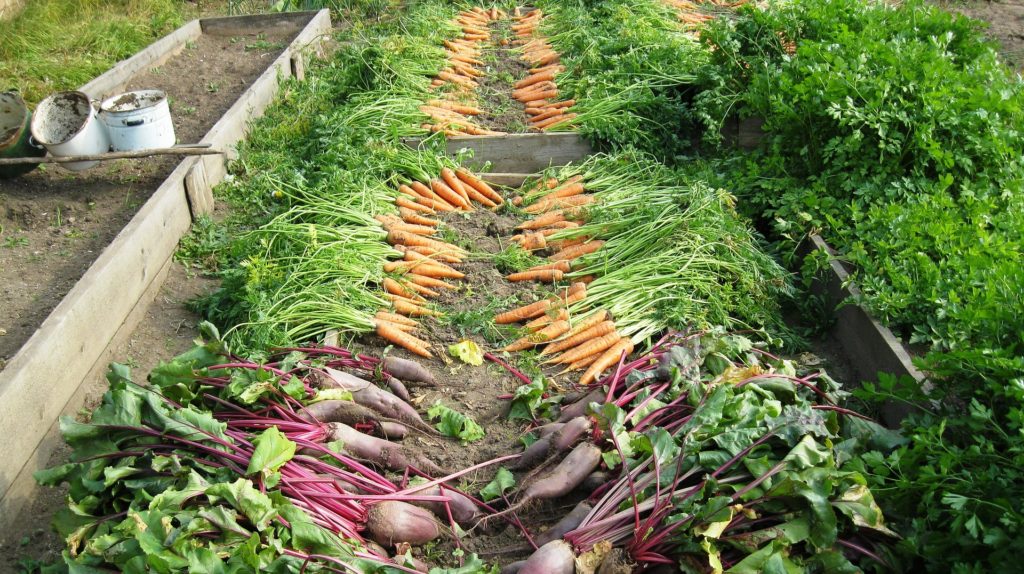Time to Think About Fall Vegetable Gardening
go.ncsu.edu/readext?725453
en Español / em Português
El inglés es el idioma de control de esta página. En la medida en que haya algún conflicto entre la traducción al inglés y la traducción, el inglés prevalece.
Al hacer clic en el enlace de traducción se activa un servicio de traducción gratuito para convertir la página al español. Al igual que con cualquier traducción por Internet, la conversión no es sensible al contexto y puede que no traduzca el texto en su significado original. NC State Extension no garantiza la exactitud del texto traducido. Por favor, tenga en cuenta que algunas aplicaciones y/o servicios pueden no funcionar como se espera cuando se traducen.
Português
Inglês é o idioma de controle desta página. Na medida que haja algum conflito entre o texto original em Inglês e a tradução, o Inglês prevalece.
Ao clicar no link de tradução, um serviço gratuito de tradução será ativado para converter a página para o Português. Como em qualquer tradução pela internet, a conversão não é sensivel ao contexto e pode não ocorrer a tradução para o significado orginal. O serviço de Extensão da Carolina do Norte (NC State Extension) não garante a exatidão do texto traduzido. Por favor, observe que algumas funções ou serviços podem não funcionar como esperado após a tradução.
English
English is the controlling language of this page. To the extent there is any conflict between the English text and the translation, English controls.
Clicking on the translation link activates a free translation service to convert the page to Spanish. As with any Internet translation, the conversion is not context-sensitive and may not translate the text to its original meaning. NC State Extension does not guarantee the accuracy of the translated text. Please note that some applications and/or services may not function as expected when translated.
Collapse ▲As the summer heat & humidity are still beating down on us, many of us are thinking about how to keep cool and perhaps heading for the beach or mountains, not fall gardening. Transplants for cool-season vegetables are appearing in the garden centers and now is the time to plant. If you haven’t tested your soil, now is also a good time, as the testing is free until Thanksgiving. You can pick up a soil test kit at the N.C. Cooperative Extension of Union County office or at any Union County Public Library.
Here are a few tips for getting your fall garden off to a good start:
- Plant seed slightly deeper than in the spring, around ½” – 1” deep. Do not cover seeds with mulch as this could bury them too deep and prevent germination.
- Incorporate an organic or slow-release fertilizer into the soil at planting time based on soil test results.
- Mulch transplants using a 2” layer of straw, shredded leaves, or ground pine bark to retain moisture and prevent weeds.
- Monitor your plants and planting beds and water when the first few inches feel dry. Use soaker hoses to apply water directly to the soil, placing them adjacent to seed rows and transplants, ideally underneath your mulch.
- Use floating row cover to protect your plants and seedbeds. Row cover will shade plants from high heat and can also serve to protect them from pests such as caterpillars.
- If you have areas where you will not grow a crop, consider planting a cover crop. The cover crop will hold nutrients and when you turn it under before planting in the spring you will be adding beneficial organic matter to your soil.
For guidelines on when to plant, conduct an internet search using the words “Central North Carolina Planting Calendar.”
The 2020 Union County Heritage Festival is going virtual on September 19. Plan to take part in the Wild Turkey 5K and check out all the activities that will be available virtually from 9 a.m.–4 p.m. at Union County Heritage Festival.





